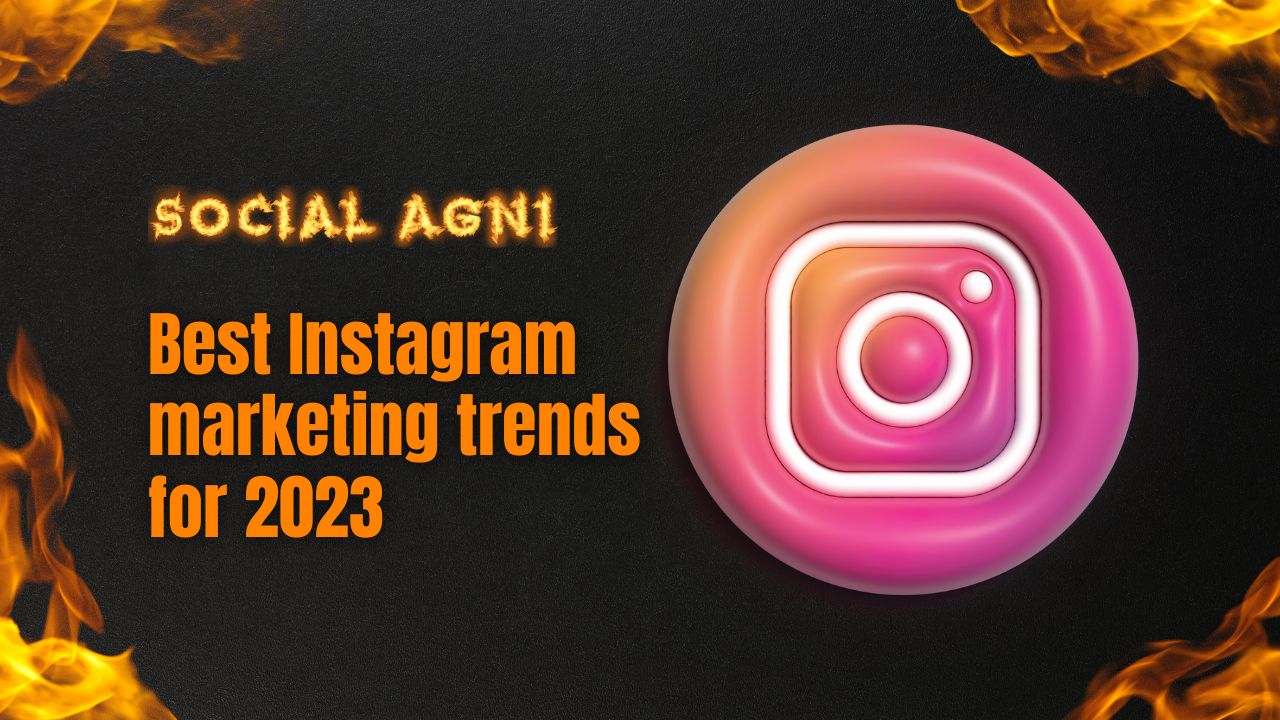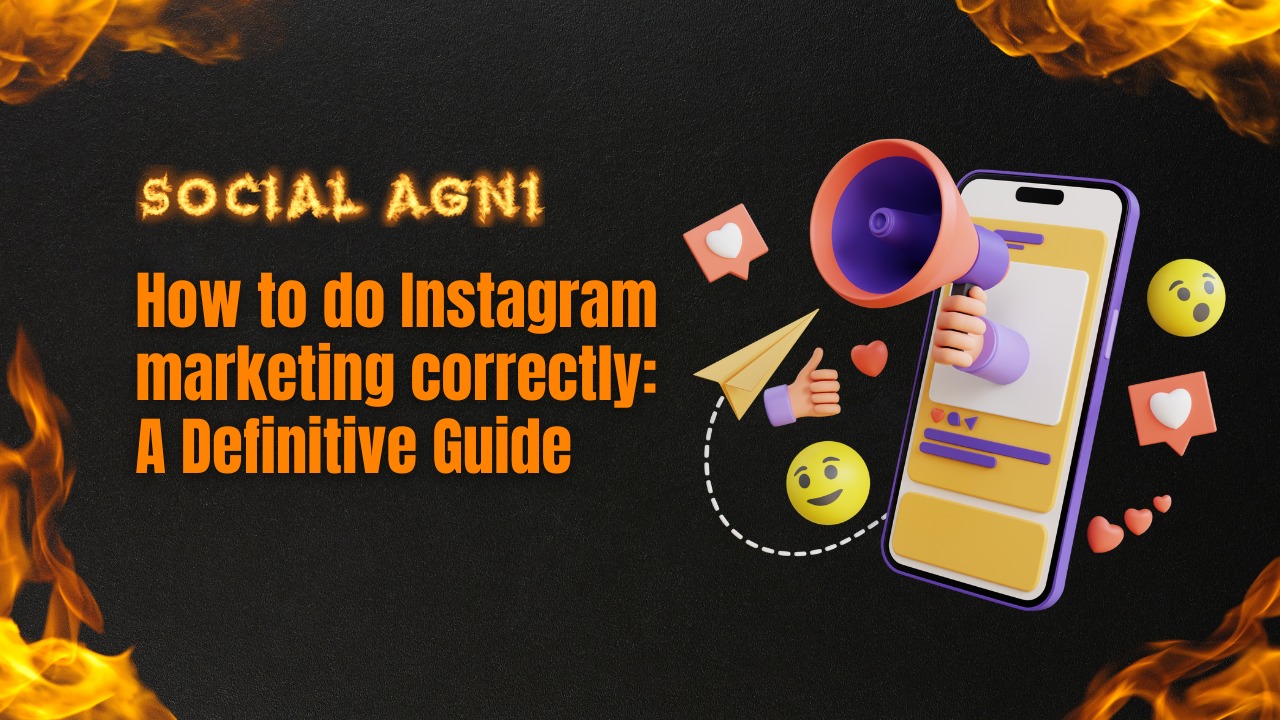Social media has changed how organizations market and engage with customers in the digital age. Instagram is a leading platform for marketers to display their products and establish a devoted following. In 2023, marketers must keep up with Instagram marketing trends to navigate the ever-changing social media ecosystem and boost their brand’s online visibility. Over a billion people use Instagram monthly. Businesses may reach and engage with their target audience through this enormous user base. As the platform evolves, so do the marketing methods needed to stand out and attract consumers. 2023 Instagram marketing trends include Influencer Marketing 2.0. In recent years, influencer collaborations have focused on nano and micro-influencers with smaller but highly engaged followings. These influencers frequently have greater sincerity and trustworthiness, resulting in deeper audience relationships. To develop brand confidence and consistency, brands are seeking long-term collaborations with influencers. Shoppable posts and social commerce are also growing. Product tags and in-app purchases let Instagram users shop within the app. Brands may now increase sales and conversions by integrating social media with e-commerce. Instagram also favors video content. IGTV and Instagram Reels allow marketers to produce captivating video content. Live video streaming is another popular technique to communicate with followers. User-generated content (UGC) videos, where customers produce brand-related material, are also rising, adding authenticity and engagement. Instagram Stories’ polls, quizzes, and challenges are growing in popularity. Interactive components help companies engage, learn, and engage. Augmented Reality (AR) filters allow marketers to provide their audience with exciting and engaging experiences. 2023 is about social listening and customization. Businesses may learn about client moods and preferences by monitoring Instagram brand mentions. Based on this information, marketers may customize and personalize experiences to engage with their audience and give relevant content. Instagram UGC campaigns remain popular. Encourage people to develop brand-related content to establish trust. Hashtag campaigns and contests boost UGC and user involvement. Sharing UGC across platforms increases brand reach and engagement. Marketing success depends on Instagram analytics and performance tracking. Instagram Insights and AI-powered analytics tools give reach, engagement, and demographic data. Marketers may optimize their strategy by evaluating these indicators. Trend 1: Influencer Marketing 2.0 Brands use influencer partnerships on Instagram to reach their target demographic. Influencer marketing 2.0 is emerging in 2023. Nano/Micro-Influencers: Nano and micro-influencers are replacing macro- and celebrity influencers. These people have niche audiences with great engagement. Nano and micro-influencers let marketers reach highly focused audiences for more meaningful interactions and conversions. These influencers tend to build trust and sincerity with their audience. Authenticity and Transparency: Influencer Marketing 2.0 emphasizes authenticity and openness. Some influencers were criticized for pushing companies without declaring sponsorship ties. As customers become more discriminating, marketers are preferring influencers who are upfront about their ties. Influencers who authentically support a brand’s ideals and goods are more likely to connect with their audience. Influencers that offer honest evaluations and experiences build trust and credibility with followers, therefore brands are working with them. Long-Term Partnerships: Long-term collaborations are another Influencer Marketing 2.0 change. Brands are valuing long-term connections with influencers over one-off collaborations. Long-term agreements allow influencers to truly grasp the brand’s values and products. This consistency builds brand awareness and trusts over time. Long-term agreements also help influencers connect with the company, resulting in more honest and effective content. Nano and micro-influencers, sincerity, openness, and long-term collaborations define Influencer Marketing 2.0. These trends can help firms use influencer marketing to connect with their target audience and boost Instagram engagement and conversions. Trend 2: Shoppable Posts and Social Commerce In 2023, Instagram’s shoppable posts and social commerce will reach new heights. These capabilities are helping brands shorten the buying experience and boost Instagram conversions. Instagram Shopping Features: Product tags and the shopping tab have made Instagram a virtual showroom. Brands can tag items in articles and stories to provide extensive information and direct links to purchase. Brands may engage users by effortlessly incorporating product information into visual content. In-App Purchases and Checkout: Instagram added in-app purchases and checks out to improve commerce. Users may now finish transactions without being diverted to external websites. Users may touch a button to complete transactions using stored payment information, making shopping easy. This simplified buying procedure enhances conversions. Influencer-Driven Sales: Instagram influencers also drive sales. Influencers’ followers trust their advice. Brands may use influencers and shoppable posts to directly market to their engaged audience. Influencers may boost brand visibility, trust, and sales. Shoppable posts and social commerce boost companies. It showcases its items in an interesting and aesthetically appealing way while streamlining the buying process. Brands can use these trends to streamline purchasing, boost conversions, and make money on Instagram. Finally, Instagram marketing in 2023 includes shoppable posts and social commerce. Instagram’s retail tools, in-app purchases, and influencer-driven sales let businesses reach Instagram’s large user base and turn engaged users into consumers. Businesses may increase sales and use Instagram as an e-commerce platform by adopting this trend. Trend 3: Video Content Dominance Video content dominates Instagram in 2023, giving marketers a compelling opportunity to engage with their audience. IGTV, Instagram Reels, and live streaming have made video content important for Instagram marketing efforts. IGTV and Instagram Reels: Instagram’s long-form video platform and short-form video feature have gained popularity. These video formats let marketers express tales visually and attract attention. IGTV lets marketers post longer, more in-depth films, while Reels lets them post short, fun movies. Brands may use both formats to create diverse video content for different audiences. IGTV and Instagram Reels: Live video streaming helps marketers communicate with their audience in real-time. Live streaming makes Q&As, product premieres, behind-the-scenes glimpses, and interactive events real and dynamic. Brands may interact with followers, answer questions, and get fast feedback. Live video’s immediacy and a personal touch may build brand loyalty and audience relationships. User-Generated Content (UGC) Videos: UGC videos are popular and valuable for marketers. Users share brand-related UGC videos. Contests, challenges, and sponsored hashtags can inspire UGC videos. These films demonstrate authenticity and develop viewer
Today, Instagram is the most popular social media platform with over millions and millions of users. With such a vast audience, it is no wonder that businesses are using Instagram as a marketing tool to reach their target audience. However, simply having an Instagram account and posting content is not enough to succeed in Instagram marketing. In this article, we will provide you with a definitive guide on how to do Instagram marketing correctly. Set your goals Before starting any marketing campaign, it is essential to set your goals. What do you want to achieve with your Instagram marketing? Is it to increase brand awareness, drive traffic to your website, generate leads, or boost sales? Define your target audience Knowing your target audience is crucial in Instagram marketing. You need to know who you want to reach and what their interests are. This information will help you create content that resonates with your target audience and increase engagement. Create a content strategy Your content strategy should align with your marketing goals and target audience. Decide on the type of content you want to post and how often you want to post it. Your content should be visually appealing, relevant, and engaging. Optimize your profile Your Instagram profile should be optimized to attract and engage your target audience. Your profile should have a clear profile picture, a bio that highlights your brand’s unique value proposition, and a call-to-action button. Use hashtags Hashtags are essential in Instagram marketing as they help increase the visibility of your content. Research popular hashtags in your niche and use them in your posts to reach a broader audience. Engage with your audience Engagement is key to a successful Instagram marketing campaign. Respond to comments and direct messages promptly and engage with your audience through likes and comments on their posts. Collaborate with influencers Influencer marketing is a powerful tool in Instagram marketing. Collaborating with influencers in your niche can help increase your brand’s visibility and reach a wider audience. Use Instagram ads Instagram ads are a great way to reach your target audience and increase brand awareness. You can create ads that target specific demographics and interests, which can result in higher engagement and conversions. Measure your results Finally, it is essential to measure the results of your Instagram marketing campaign to see how well it is performing. Track your metrics, such as engagement, reach, and conversions, and adjust your strategy accordingly. How instagram is key success to e commerce Instagram has become a key success factor for e-commerce businesses in recent years. With over one billion active users, Instagram provides businesses with a massive audience to reach and engage with. In this article, we will discuss how Instagram can help drive success for e-commerce businesses. 1. Visual Appeal Instagram is a visual platform, and e-commerce businesses can take advantage of this by showcasing their products in visually appealing ways. High-quality images and videos that showcase the product’s features and benefits can grab the attention of users scrolling through their feed. This visual appeal can increase the likelihood of users clicking through to the e-commerce website to make a purchase. 2. Product Discovery Instagram’s explore page and search function make it easier for users to discover new products and brands. E-commerce businesses can use targeted hashtags and tags to ensure their products show up in relevant searches. Additionally, Instagram’s algorithms show users content that aligns with their interests, making it easier for businesses to reach their target audience. 3. Influencer Marketing Influencer marketing on Instagram has become a powerful tool for e-commerce businesses. Influencers have large followings and can promote products to their followers, driving traffic to the e-commerce website. Influencer partnerships can also help build brand credibility and trust with the influencer’s followers. 4. User-Generated Content User-generated content (UGC) is content created by users that showcase their experiences with a product. E-commerce businesses can leverage UGC on Instagram by reposting user photos and videos that feature their products. UGC helps to build social proof and credibility for the product, increasing the likelihood of other users making a purchase. 5. Social Commerce Instagram’s social commerce features allow e-commerce businesses to sell products directly through the platform. Instagram’s shopping features, such as product tags and the shopping tab on business profiles, make it easier for users to discover and purchase products without leaving the app. This convenience can increase conversion rates and sales for e-commerce businesses. Instagram algorithm for marketing brands The Instagram algorithm plays a crucial role in determining how content is distributed on the platform, making it an essential factor for brands that use Instagram for marketing. In this article, we will discuss the Instagram algorithm and how brands can leverage it to reach their target audience effectively. 1. Interest The Instagram algorithm analyzes a user’s past behavior, including the content they’ve liked and engaged with, to determine their interests. To reach your target audience effectively, brands should create content that resonates with their interests. Use relevant hashtags, post content that aligns with their interests, and engage with their content to increase the chances of your content appearing in their feed. 2. Recency Instagram prioritizes recent content, meaning newer posts will appear at the top of the feed. Brands should aim to post content regularly to ensure they remain top-of-mind with their target audience. Posting at optimal times, based on your audience’s behavior, can also increase the likelihood of your content appearing in their feed. 3. Relationships The Instagram algorithm prioritizes content from accounts that a user engages with frequently, such as their friends, family, and accounts they follow. Brands should aim to build relationships with their audience by engaging with their content and responding to comments and direct messages promptly. Collaborating with influencers and other brands in your niche can also help build relationships with their followers, increasing the chances of your content appearing in their feed. 4. Relevance The Instagram algorithm analyzes the content and captions of a post to determine its

